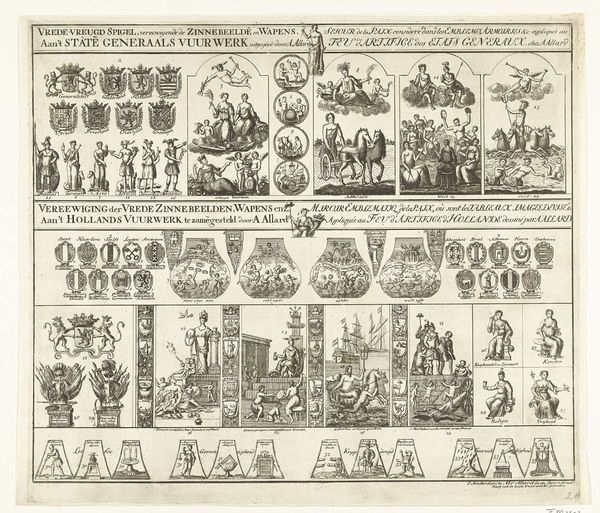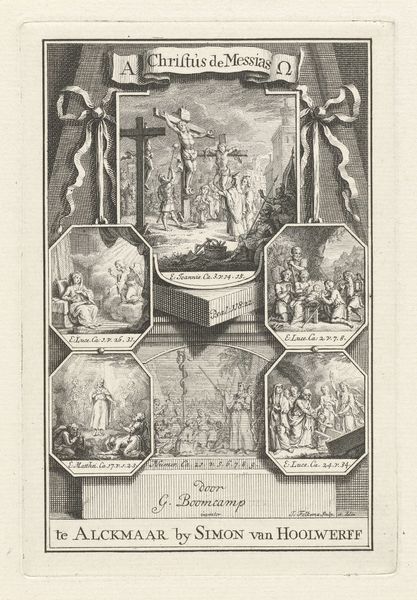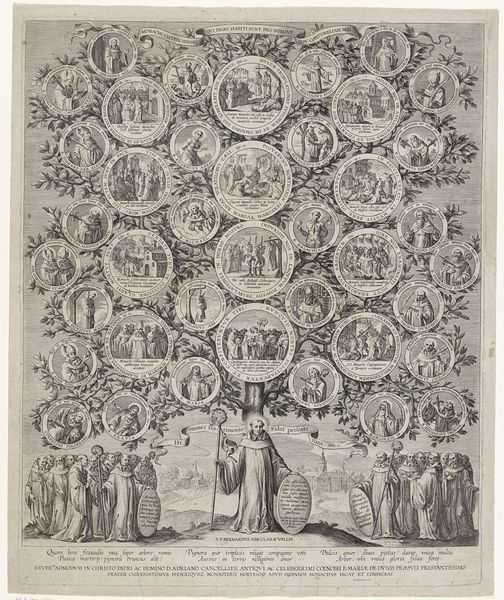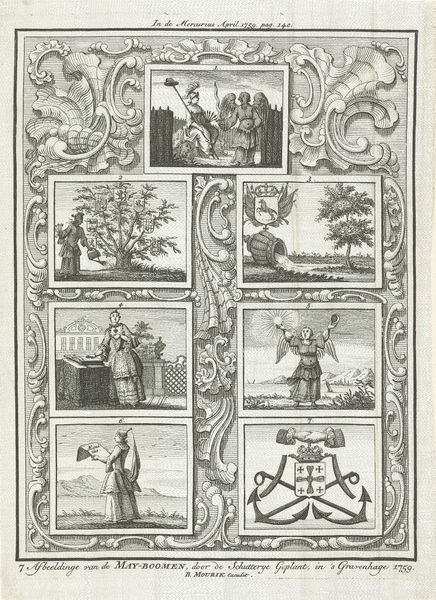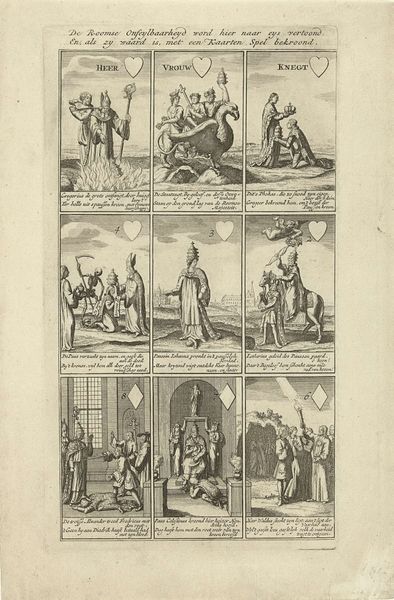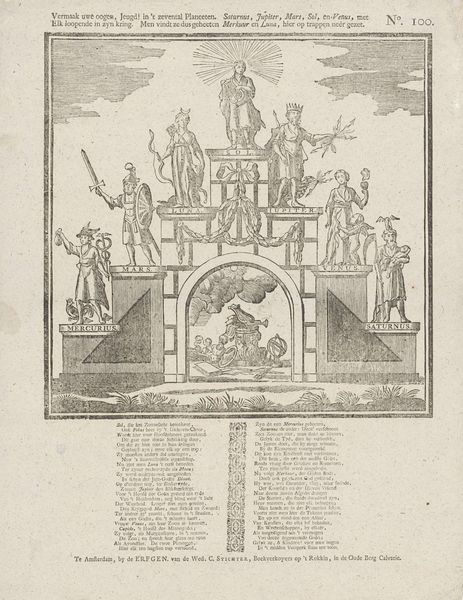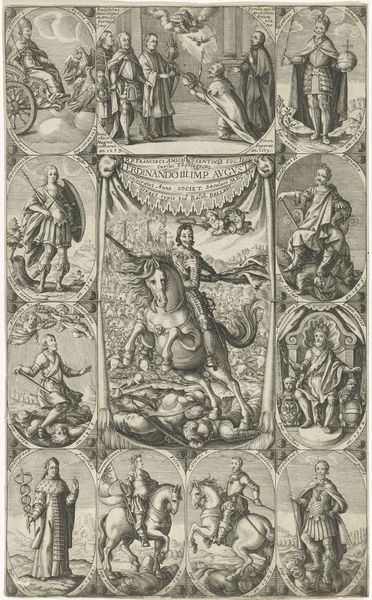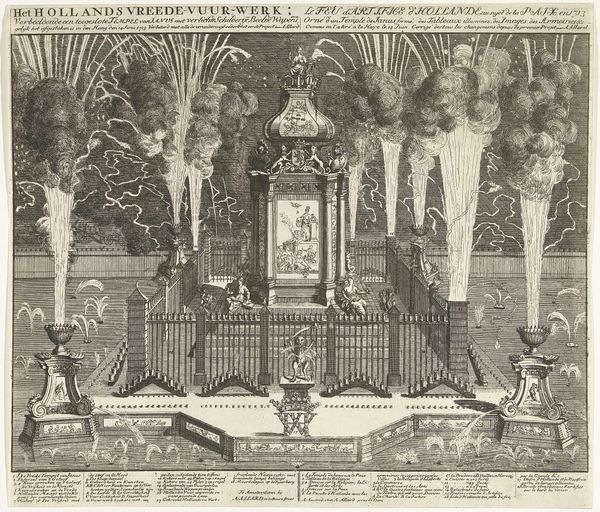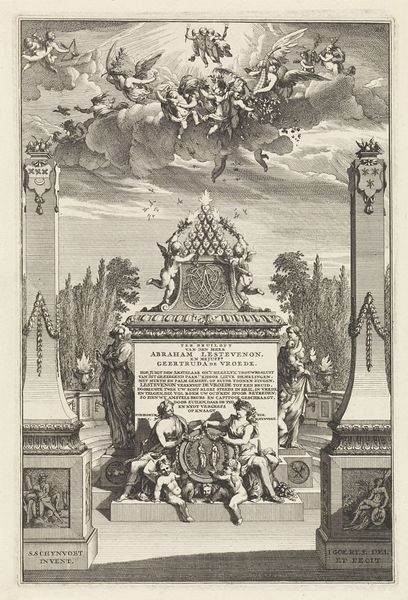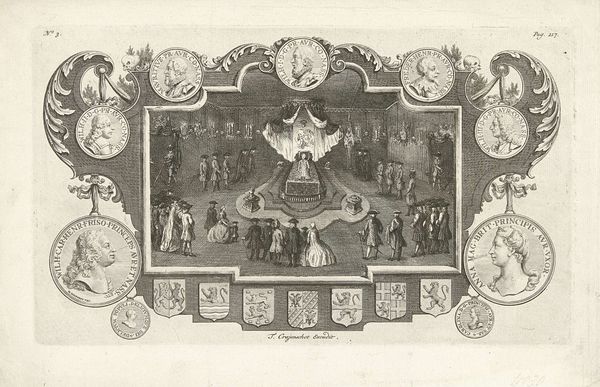
print, engraving
#
baroque
#
pen drawing
#
dutch-golden-age
# print
#
pen illustration
#
old engraving style
#
cityscape
#
genre-painting
#
history-painting
#
engraving
Dimensions: height 183 mm, width 135 mm
Copyright: Rijks Museum: Open Domain
Curator: Looking at this print by Caspar Jacobsz. Philips, entitled "Meiboom geplant door de Haagse Schutterij, 1757," or "Maypole Planted by the Hague Civic Guard, 1757", the initial feeling is one of historical remove and somewhat detached observation. The work presents a series of scenes like stills from a play, carefully framed. Editor: My eye is immediately drawn to the central image of the trimmed tree. In folklore, trees stand as symbols of life and longevity. Presenting the “Meiboom,” a maypole decorated by townspeople, marks springtime, rebirth, and renewed hope. We cannot examine such symbols without understanding their deep psychological weight and the culture-bound ideas which sustain them. Curator: Exactly. This print, dating back to 1757, reveals the ways in which community and civic pride were intertwined, particularly concerning the schutterij. Who comprised it, how were its social stratifications shaped, and how did displays such as this enforce systems of control and cohesion? Editor: The surrounding panels feel like individual scenes in a memory palace. A trial, a ship at sea, men guarding a throne, an encounter on the path, the sunrise, the house with the swans: each suggests a facet of human experience, or the journey to moral and social perfection in the style of the age. The sunrise at the end stands as a radiant sign. Curator: I see echoes of contemporary anxieties in this work, about national identity, societal order, and perhaps most pointedly, displays of performative patriotism by armed groups. To plant a Maypole is ostensibly benign, yet the underlying message concerning civic authority is potent, which merits our attention. Editor: Perhaps Philips selected and organized the surrounding panels with an eye to create his own emblematic meaning for the central planting scene, in ways that only viewers steeped in contemporary cultural symbols would recognize. Curator: In summary, while seeming like a charming record, Philips’ print delivers coded social commentary relevant to his moment, raising crucial inquiries about power, representation, and cultural belonging applicable even now. Editor: Looking closely at the Maypole’s rooted position against the stark backdrop, and comparing it with the swan tableau at the end of the set, reveals this careful attention to emotional connections with the viewer. It’s amazing to consider the endurance of symbolism over centuries.
Comments
No comments
Be the first to comment and join the conversation on the ultimate creative platform.


